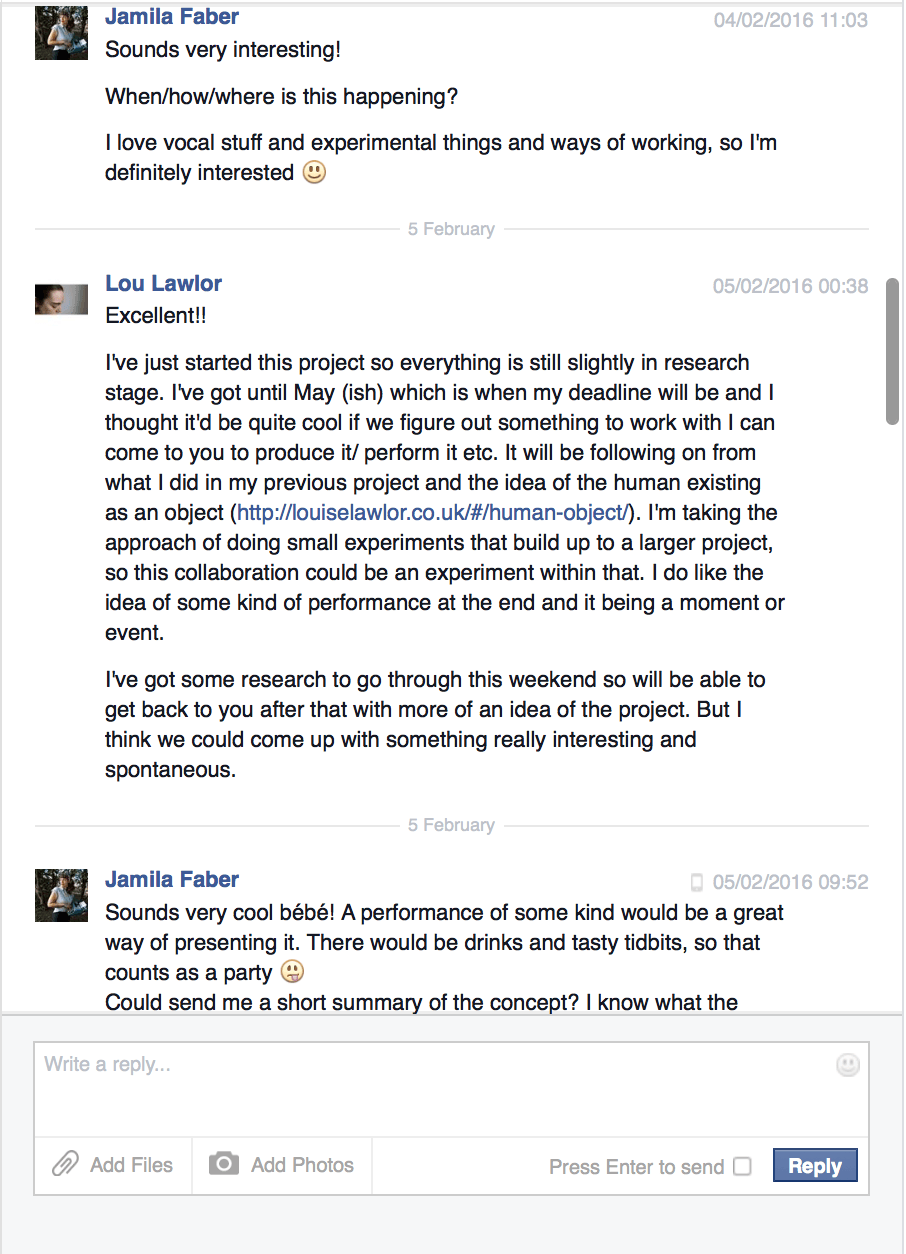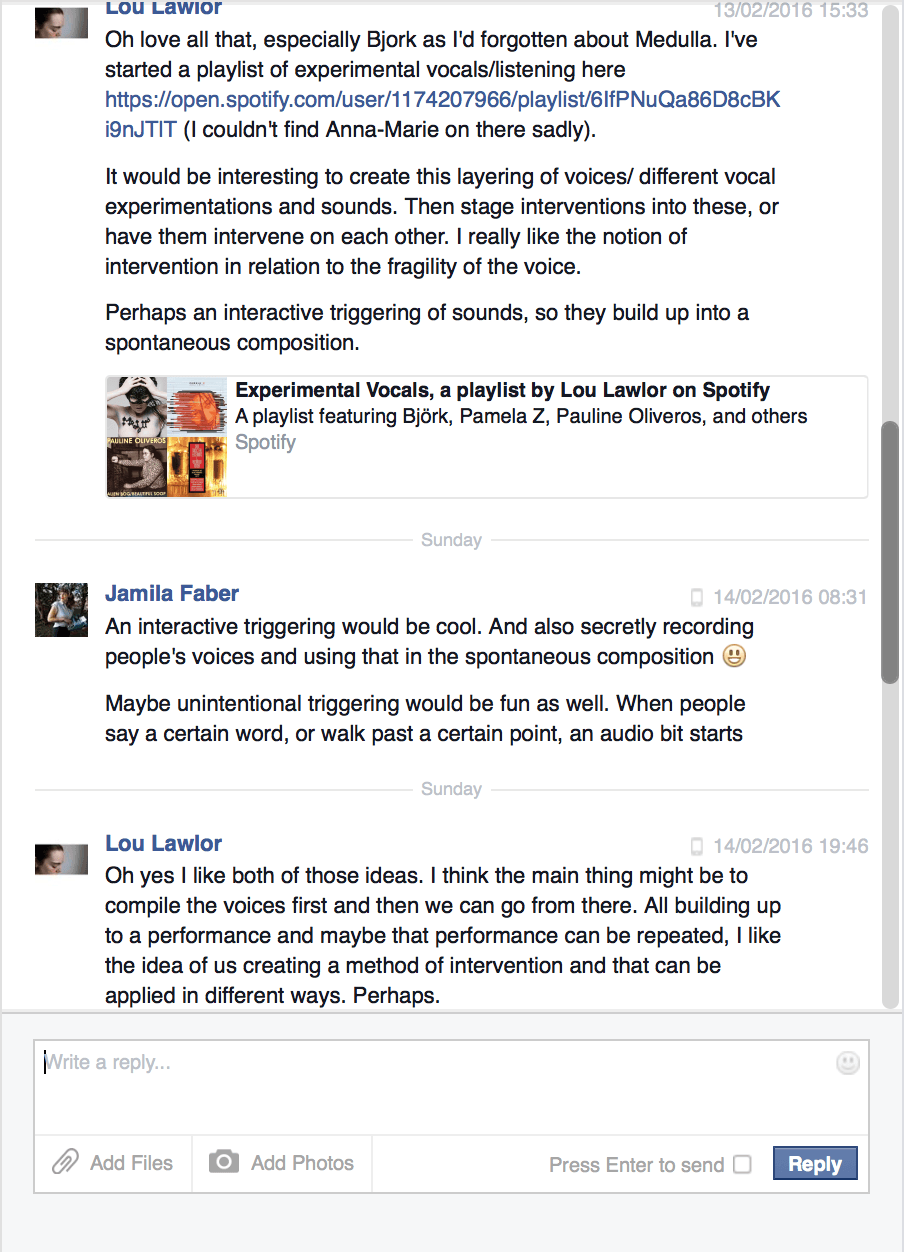As a culmination of some of the research I have done so far I have formulated some musings on a direction I could take my project in, taking into account notions of:
- Intervention
- Collectivity – the collective voice
- Mediation of the voice – through online social channels
- Compression
- Exception – the removal of the oppressor in order to exist authentically
I am hoping to collaborate with Jamila Faber, a writer and musician from the Netherlands, and utilise her knowledge of sound and also the voice as a tool within art. We have been throwing ideas back and forth in relation to my research:


This has formulated ideas around a creation of a layering of voices/ different vocal experimentations and sounds that could form a base, then interventions into these could be staged in order to highlight the intrinsic fragility of the voice (seeing it as an object through a spatial/temporal interaction of intervention). Perhaps these interventions could be achieved through an interactive triggering of sounds to build up into a spontaneous composition. The performativity of the intervention is something that was thrown up when reading a Rhizome interview with V4ULT (a curatorial platform initiated by Anna Mikkola and Hanna Nilsson in 2013), their second exhibition (Episode 2) centred on the theme of intervention where those of another temporary in nature were inserted into the populated exhibition space. They stipulated these interventions could take any form and allowed them to see what type of interpretations emerge when two practices overlap, setting up layers, clashes and frictions in the creation of a dynamic exhibition format where art works and practices come together in agreement or dissonance.
Secretly recording people’s voices as they enter into the space could be fed back out and used in a spontaneous composition, this could also lead to the notion of unintentional triggering when people say a certain word, or walk past a certain point, an audio fragment is triggered. The project Spirit is a Bone by Adam Broomberg and Oliver Chanarin uses a similar notion of the unknown capturing of identity, they have utilised FaceControl 3-D which is used in facial recognition surveillance cameras to capture faces from different angles and then combines the images together to render a 3-D model that goes into a database and can be matched against other images to identify suspects in real time. Broomberg and Chanarin have re-purposed this software in the creation of portraits of German citizens, ‘each person was invited into a makeshift studio where the system—on loan from Vocord—was set up. It looked as clandestine as it sounds, with just four lenses embedded into the walls and wired to a computer. The subject merely had to walk into the room and the portrait was complete.’ The final portraits have a creepy effect that somewhat removes humanity, they are cold and present a clear severed link between the human and the portrait.
This idea also throws up the notion of the collective voice in the form of a collaborative composition, a choir of everyday voices that sculpts sound into object.
Attached to this is also my brief experiment to convert a .wav file into a 3D printed vinyl record, this is still something I would like to explore and push forward beyond its current limits but I’m not entirely sure at the minute if it could be incorporated with the above thought process.
Next to do:
- Curation of voices – collect together voices as recorded through various formats and then mediated through various forms of social media/online tools (including Facebook, Twitter, Soundcloud, email, iMessage, Skype etc).
